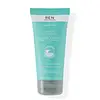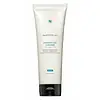What's inside
What's inside
 Key Ingredients
Key Ingredients

 Benefits
Benefits

 Concerns
Concerns

 Ingredients Side-by-side
Ingredients Side-by-side

Water
Skin ConditioningKaolin
AbrasiveCetearyl Alcohol
EmollientCaprylic/Capric Triglyceride
MaskingSesamum Indicum Seed Oil
EmollientGlycerin
HumectantCetearyl Glucoside
EmulsifyingHelianthus Annuus Seed Oil
EmollientSalix Nigra Bark Extract
Skin ProtectingZinc Gluconate
Skin ConditioningBisabolol
MaskingOryzanol
Skin ConditioningSalvia Officinalis Oil
MaskingLavandula Angustifolia Oil
MaskingCalendula Officinalis Flower Extract
MaskingLeptospermum Scoparium Branch/Leaf Oil
TonicTocopherol
AntioxidantBenzyl Alcohol
PerfumingDehydroacetic Acid
PreservativeAnthemis Nobilis Flower Oil
MaskingXanthan Gum
EmulsifyingCrataegus Oxyacantha Stem Extract
AntimicrobialCocos Nucifera Fruit Extract
EmollientGlucose
HumectantLactobacillus
Skin ConditioningSodium Chloride
MaskingLactoperoxidase
StabilisingGlucose Oxidase
StabilisingLactic Acid
BufferingLinalool
PerfumingWater, Kaolin, Cetearyl Alcohol, Caprylic/Capric Triglyceride, Sesamum Indicum Seed Oil, Glycerin, Cetearyl Glucoside, Helianthus Annuus Seed Oil, Salix Nigra Bark Extract, Zinc Gluconate, Bisabolol, Oryzanol, Salvia Officinalis Oil, Lavandula Angustifolia Oil, Calendula Officinalis Flower Extract, Leptospermum Scoparium Branch/Leaf Oil, Tocopherol, Benzyl Alcohol, Dehydroacetic Acid, Anthemis Nobilis Flower Oil, Xanthan Gum, Crataegus Oxyacantha Stem Extract, Cocos Nucifera Fruit Extract, Glucose, Lactobacillus, Sodium Chloride, Lactoperoxidase, Glucose Oxidase, Lactic Acid, Linalool
Water
Skin ConditioningCoco-Betaine
CleansingPropylene Glycol
HumectantPEG-120 Methyl Glucose Dioleate
EmulsifyingSorbitol
HumectantGlycerin
HumectantGlycolic Acid
BufferingTriethanolamine
BufferingSodium Laureth Sulfate
CleansingSodium Chloride
MaskingDisteareth-100 Ipdi
Phenoxyethanol
PreservativeSalicylic Acid
MaskingCapryloyl Salicylic Acid
ExfoliatingMenthol
MaskingMethylparaben
PreservativeDisodium EDTA
Steareth-100
Gel FormingCeramide AP
Skin ConditioningWater, Coco-Betaine, Propylene Glycol, PEG-120 Methyl Glucose Dioleate, Sorbitol, Glycerin, Glycolic Acid, Triethanolamine, Sodium Laureth Sulfate, Sodium Chloride, Disteareth-100 Ipdi, Phenoxyethanol, Salicylic Acid, Capryloyl Salicylic Acid, Menthol, Methylparaben, Disodium EDTA, Steareth-100, Ceramide AP
Ingredients Explained
These ingredients are found in both products.
Ingredients higher up in an ingredient list are typically present in a larger amount.
Glycerin is already naturally found in your skin. It helps moisturize and protect your skin.
A study from 2016 found glycerin to be more effective as a humectant than AHAs and hyaluronic acid.
As a humectant, it helps the skin stay hydrated by pulling moisture to your skin. The low molecular weight of glycerin allows it to pull moisture into the deeper layers of your skin.
Hydrated skin improves your skin barrier; Your skin barrier helps protect against irritants and bacteria.
Glycerin has also been found to have antimicrobial and antiviral properties. Due to these properties, glycerin is often used in wound and burn treatments.
In cosmetics, glycerin is usually derived from plants such as soybean or palm. However, it can also be sourced from animals, such as tallow or animal fat.
This ingredient is organic, colorless, odorless, and non-toxic.
Glycerin is the name for this ingredient in American English. British English uses Glycerol/Glycerine.
Learn more about GlycerinChances are, you eat sodium chloride every day. Sodium Chloride is also known as table salt.
This ingredient has many purposes in skincare: thickener, emulsifier, and exfoliator.
You'll most likely find this ingredient in cleansers where it is used to create a gel-like texture. As an emulsifier, it also prevents ingredients from separating.
There is much debate on whether this ingredient is comedogenic. The short answer - comedogenic ratings don't tell the whole story. Learn more about comegodenic ratings here.
The concensus about this ingredient causing acne seems to be divided. Research is needed to understand if this ingredient does cause acne.
Scrubs may use salt as the primary exfoliating ingredient.
Learn more about Sodium ChlorideWater. It's the most common cosmetic ingredient of all. You'll usually see it at the top of ingredient lists, meaning that it makes up the largest part of the product.
So why is it so popular? Water most often acts as a solvent - this means that it helps dissolve other ingredients into the formulation.
You'll also recognize water as that liquid we all need to stay alive. If you see this, drink a glass of water. Stay hydrated!
Learn more about Water